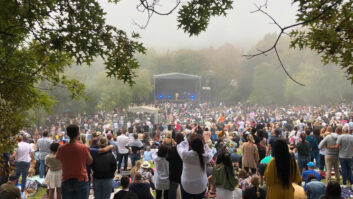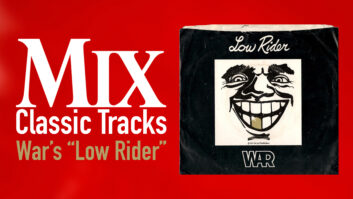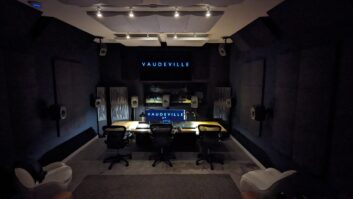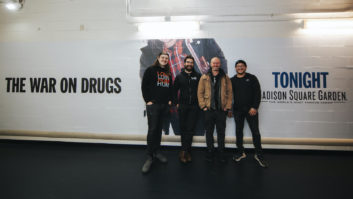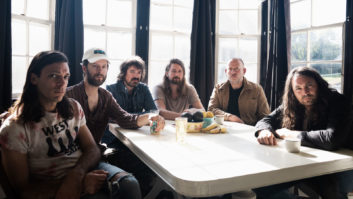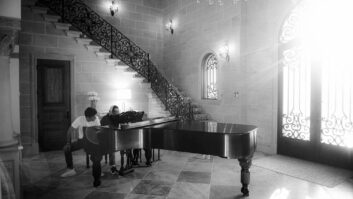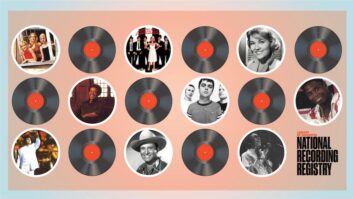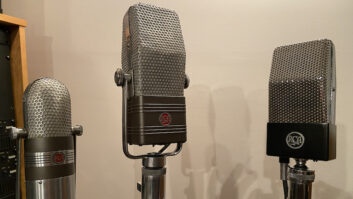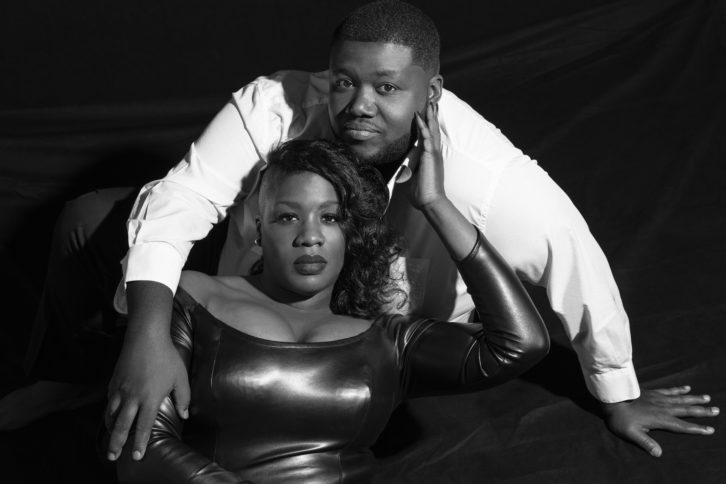
One of the lessons the pandemic has taught us is, there’s no replacement for live music. We’re all longing for the time when concerts can happen again. In the meantime, there’s a whole lot of streaming going on, and there are special studio albums like The War and Treaty’s Hearts Town, which joyfully and deliberately takes its production cues from the live experience.
“People might think that what we did was a little bit backwards,” says multi-instrumentalist Michael Trotter—who co-produced the new album and fronts The War and Treaty (“Just lovebirds singing without reverb,” according to the website) with his wife, Tanya Blount-Trotter. “When I thought about what I wanted this album to sound like, I wanted us to make fans feel the way they do when they hear us live. So my process was, I would write a new song, and then we would perform it live and see how the crowd reacted—a road test. Then we’d go into the studio and produce music based off of the crowd’s reaction to our performances.”
The Trotters formed The War and Treaty in 2014. Both are powerhouse vocalists. If you haven’t heard them, imagine Al Green harmonizing with Gladys Knight on original songs that have roots in soul, gospel, R&B and Americana. In 2017 they released an EP called Down to the River (Strong World Entertainment). Their debut album, Healing Tide (2018, Strong World Entertainment/Thirty Tigers), was produced by Buddy Miller and charted well: Number 11 on Billboard’s Heatseekers and Number 26 on Independent Albums.
Hearts Town is the duo’s first record for Rounder, and their first collaboration with the album’s engineer/mixer Gary Paczosa. Work on the record started with a trial run in Blackbird Studio, Nashville, Studio D, in early 2019.
“At first we just cut three tracks to see if it was a good match,” Paczosa recalls. “The more we talked about the direction of the album, the more the main focus became to try to capture the energy and connection they generate when they play live—not always an easy task. It’s such a different vibe when you’re performing for an audience that you can feed off of, as opposed to standing in a room in front of a microphone. Pulling that off in the studio can be arduous and trying, but everyone was on the same page and willing to work as hard as needed to get vocals that we were all happy with.”
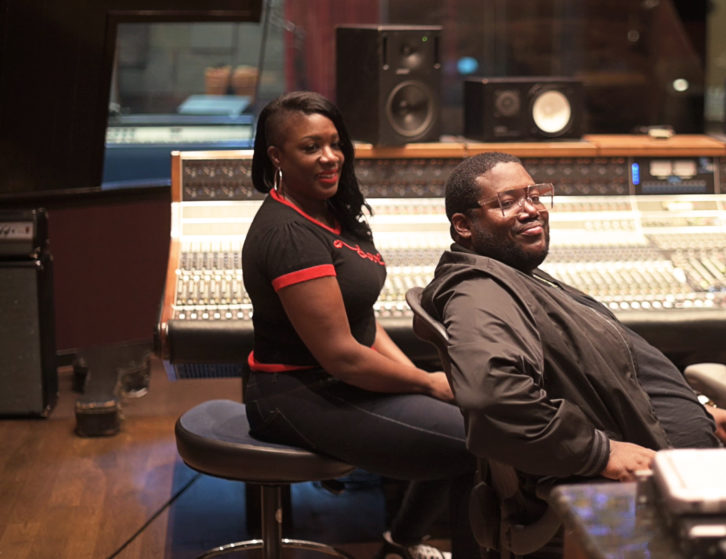
Sounding like a live band means recording as a live band: Sessions in Blackbird began with The War and Treaty’s touring band, as well as the horns, keyboard players and vocalists. One song, “Beautiful,” features Jason Isbell on electric guitar and vocals.
“We met Jason Isbell when we were opening for a co-headlining tour that sometimes had Jason going last and some nights Brandi Carlile,” recalls Michael Trotter. “Late, after the shows, we went in Jason’s dressing room and we just talked about music and life. We had conversations that were really deep. I knew I wanted to have Jason on our record in any capacity. It’s such a joy just to watch him work.”
Paczosa cut to Blackbird’s 24/96 Pro Tools rig. “I also really tried to lean on the API console in that room as much as possible,” he says. “Blackbird has so many amazing microphones and gear options to play with that sometimes I get caught up in trying to use every piece of gear in the studio. On this record, I tried to keep things simpler and used the API for the bulk of the signal chains.”
Paczosa and assistant engineer Lowell Reynolds set up a few different electric guitar stations, one that included Paczosa’s own Fender Vibroverb “for bigger, punchier tone,” as well as one with a Milkman 12 and a Dumble amp. His go-to guitar miking setup includes an RCA BK-5B ribbon mic and an Audio-Technica 4050 into a Vintech X73 mic pre and an Empirical Labs Distressor, along with the Retro 176 for a little extra color.
The bass ended up being a blend of DI (with different combinations of the SansAmp Bass Driver and Earthquaker fuzz pedals) and an Ampeg Fliptop bass amp miked with either the EV RE20 or U47, depending on the song.
“With so many players cutting live, we really ate up every square inch of Studio D,” Paczosa says. “In addition to cutting a full band during the day, we’d record strings in the evening on tracks we had cut that day, so we left the middle section of the studio always set up for that. It’s such an outstanding live room that I leaned on the room mics as much as I could. I had a pair of Telefunken 251s and B&K 4006s [in the room], and then KM54s on the violins and viola, and a Sony C800G on cello. Those were all recorded through the API.”
“Blackbird was just an incredible facility to work in,” says Tanya Blount-Trotter. “To have a room where you can set up orchestral strings plus horns plus our band was just really a great experience.”
As for the horns, the trumpet was captured with an RCA KU-3A, and the sax was cut with a Neuman U67. Michael Trotter’s keyboards were taken direct, but he also played a Yamaha C7 piano on a lot of tracks where Paczosa placed a pair of Neumann C12s up near the hammers and a Coles ribbon mic down low for some added bottom end.
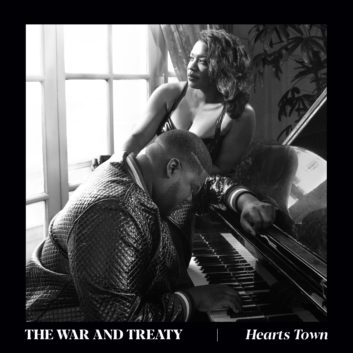 “The biggest challenge of this record was capturing the vocals,” Paczosa says. “There’s just so much soul and emotion in both of their voices, and they’re both very dynamic. Trying to capture all of that and maintain great tone was an ongoing challenge all the way through the process. I tried out many different microphones on them, but ultimately settled on a Sony C800G, as well as an RCA 77 for Tanya.
“The biggest challenge of this record was capturing the vocals,” Paczosa says. “There’s just so much soul and emotion in both of their voices, and they’re both very dynamic. Trying to capture all of that and maintain great tone was an ongoing challenge all the way through the process. I tried out many different microphones on them, but ultimately settled on a Sony C800G, as well as an RCA 77 for Tanya.
“The C800G is a pretty bright mic to begin with, but I love the detail that it captures on some of the quieter stuff,” Paczosa explains. “The RCA gave me something darker and warmer to blend in for the sections that Tanya would be too harsh for the C800G. On Michael, I ended up using the Blue Bottle with the B6 capsule. For both of the singers, the signal path was a Mastering Lab preamp, GML EQ, GML compressor, and the Retro 176 compressor at the end of the chain.”
“Gary Paczosa is like a zen master in the studio,” Michael Trotter says. “He always takes the time that’s needed and pays attention to every detail. That’s a wonderful trait, and I learned so much from him.”
